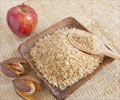Highlights
- Rice contains about 10-20 times more arsenic than other cereal crops as it grows under flooded conditions.
- Arsenic occurs naturally in soil, and inorganic arsenic is classified as a category one carcinogen.
- Soaking rice overnight and cooking one part rice with five parts of water reduces arsenic content.
Rice is grown under flooded conditions. This makes the arsenic locked in the soil more readily available, meaning that more can be absorbed into the rice grains.
Arsenic is known to be carcinogenic and rice is something which cannot be looked over. So, one possible solution is to find a better method of cooking which leaches arsenic.
Queens University Belfast professor of biological sciences Andy Meharg tested three methods of cooking rice to determine which methods would have arsenic remaining in the rice.
One was the conventional “steaming out” method, using two parts water and one part rice. Second, using five parts water and one part rice and washing off the excess water, and the final method where the rice was left soaked overnight.
Meharg believes that the best thing to do would be to soak the rice overnight, wash and rinse it until the water is clear, drain the water, and boil the rice in a saucepan with the aforementioned five parts water/one part rice ratio.










